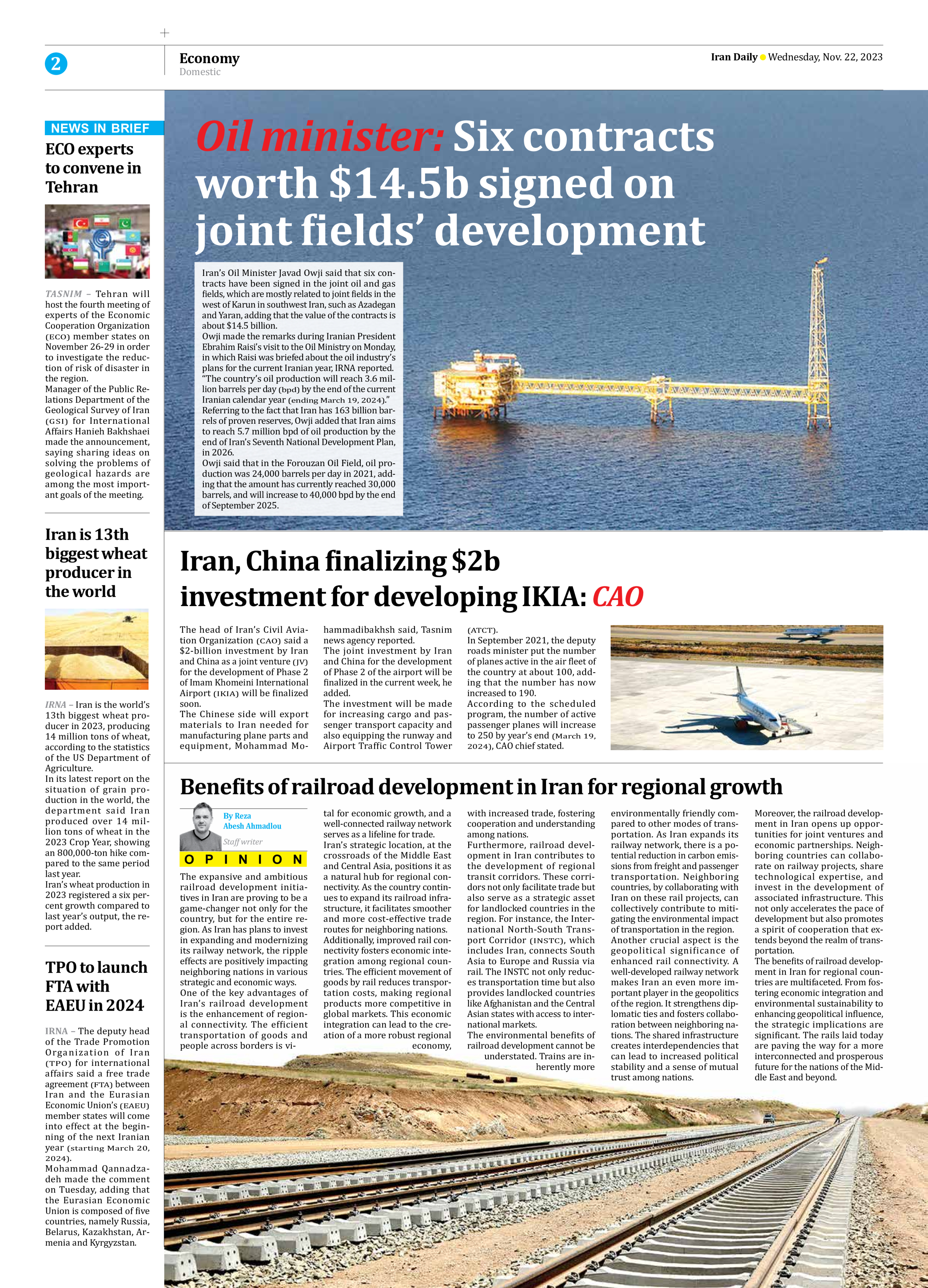
Benefits of railroad development in Iran for regional growth
By Reza Abesh Ahmadlou
Staff writer
The expansive and ambitious railroad development initiatives in Iran are proving to be a game-changer not only for the country, but for the entire region. As Iran has plans to invest in expanding and modernizing its railway network, the ripple effects are positively impacting neighboring nations in various strategic and economic ways.
One of the key advantages of Iran’s railroad development is the enhancement of regional connectivity. The efficient transportation of goods and people across borders is vital for economic growth, and a well-connected railway network serves as a lifeline for trade.
Iran’s strategic location, at the crossroads of the Middle East and Central Asia, positions it as a natural hub for regional connectivity. As the country continues to expand its railroad infrastructure, it facilitates smoother and more cost-effective trade routes for neighboring nations.
Additionally, improved rail connectivity fosters economic integration among regional countries. The efficient movement of goods by rail reduces transportation costs, making regional products more competitive in global markets. This economic integration can lead to the creation of a more robust regional economy, with increased trade, fostering cooperation and understanding among nations.
Furthermore, railroad development in Iran contributes to the development of regional transit corridors. These corridors not only facilitate trade but also serve as a strategic asset for landlocked countries in the region. For instance, the International North-South Transport Corridor (INSTC), which includes Iran, connects South Asia to Europe and Russia via rail. The INSTC not only reduces transportation time but also provides landlocked countries like Afghanistan and the Central Asian states with access to international markets.
The environmental benefits of railroad development cannot be understated. Trains are inherently more environmentally friendly compared to other modes of transportation. As Iran expands its railway network, there is a potential reduction in carbon emissions from freight and passenger transportation. Neighboring countries, by collaborating with Iran on these rail projects, can collectively contribute to mitigating the environmental impact of transportation in the region.
Another crucial aspect is the geopolitical significance of enhanced rail connectivity. A well-developed railway network makes Iran an even more important player in the geopolitics of the region. It strengthens diplomatic ties and fosters collaboration between neighboring nations. The shared infrastructure creates interdependencies that can lead to increased political stability and a sense of mutual trust among nations.
Moreover, the railroad development in Iran opens up opportunities for joint ventures and economic partnerships. Neighboring countries can collaborate on railway projects, share technological expertise, and invest in the development of associated infrastructure. This not only accelerates the pace of development but also promotes a spirit of cooperation that extends beyond the realm of transportation.
The benefits of railroad development in Iran for regional countries are multifaceted. From fostering economic integration and environmental sustainability to enhancing geopolitical influence, the strategic implications are significant. The rails laid today are paving the way for a more interconnected and prosperous future for the nations of the Middle East and beyond.







